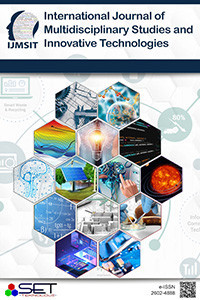Mechanical Properties of Dense Artificial Bone Fabricated by Powder Processing
Mechanical Properties of Dense Artificial Bone Fabricated by Powder Processing
Hydroxyapatite, Artificial bone, Bioceramic Powder processing, Biomechanic,
___
- J. Venkatesan and S.K. Kim, “Chitosan Composites for Bone Tissue Engineering - An Overview”, Marine Drugs, 8, 2252-2266, 2010.
- H. Zhu, D. Guo, L. Sun, H. Li, D.A.H. Hanaor, F. Schmidt and K. Xu, “Nanostructural insights into the dissolution behavior of Sr-doped hydroxyapatite”, Journal of the European Ceramic Society,Volume 38, Issue 16, Pages 5554-5562, 2018.
- H. Zhou and J. Lee, “Nanoscale hydroxyapatite particles for bone tissue engineering”, Acta Biomaterialia, Volume 7, Issue 7, Pages 2769-2781, 2011.
- G. Hannink and J.J.C. Arts, “Bioresorbability, porosity and mechanical strength of bone substitutes: What is optimal for bone regeneration?”, Injury, Volume 42, Supplement 2, Pages S22-S25, 2011.
- M. Gürbüz, G. Günkaya and A. Doğan, “Electrospray deposition of SnO2 films from precursor solution”, Surface Engineering, 2016.
- ISSN: 2602-4888
- Yayın Aralığı: Yılda 2 Sayı
- Başlangıç: 2017
- Yayıncı: SET Teknoloji
Nurdan BURGU, Haluk GÖZDE, M.cengiz TAPLAMACIOĞLU
Makineler Arası İletişim Sistemlerinde Güvenli Veri Aktarımı İçin Bir Hibrit Güvenlik Şema Önerisi
Optimization of Process Prarameters for Porous Artificial Bone
Gülsüm NAZLI ARPACI, Prof. Dr. M. Cengiz TAPLAMACIOĞLU, Doç. Dr. Haluk GÖZDE
Öğrencilerin Sınav Kaygısının Bazı Değişkenlere Göre Ölçülmesi ve Değerlendirilmesi
Utku ZEYBEKOĞLU, Ahmet ŞAHİN, Aslı ÜLKE KESKİN
Mechanical Properties of Dense Artificial Bone Fabricated by Powder Processing
Skin Segmentation by Using Complex Valued Neural Network with HSV Color Spaces
Eda CAPA KİZİLTAS, Ayşenur UZUN, Ersen YILMAZ
Kentsel Büyümenin Modellenmesi ve Simülasyon Modelleri
